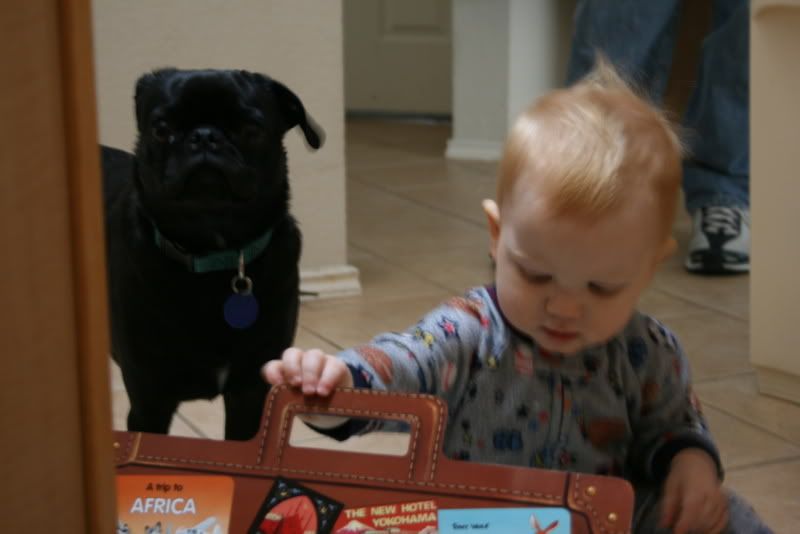"All right, then," I said, "let the story begin."
The exact year is uncertain, somewhere around 4000 B.C. The first stirrings of civilization began to appear in China's Yellow River basin, though the waterway was known by a different name at that time. It did not become the Yellow River until the ancient pugs formally claimed it as their territory years later. Having mastered advanced agricultural techniques, our pug forebears no longer had to struggle and beg for their daily kibble. They were now free to focus on building cities and creating primitive works of art.
As canines poured into these cities, trade flourished. Though technological advances came relatively slowly in these early years, the pug cities continued to grow, asserting their dominance over the less advanced human villages of the region. But frequent flooding of the Yellow River led to periods of fitful dog-paddling, impeding the pugs' progress.
In roughly 2200 B.C., the pugs began construction on a series of levees and dams. This large-scale project was funded primarily through trade in exotic herbs and spices. For example, the much smaller, much less civilized feline population of the region nearly went broke buying up pug-grown catnip. The ingenuity of these early pug merchants and engineers paid off in 1600 B.C., when the canines finally tamed the river. Now, they were free to focus on building their empire.
For the next 2,000 years, the pugs ruthlessly expanded, swallowing up towns as if they were Milkbones. They forged alliances with canine tribes, such as the mighty Pekingese and Shih Tzu warriors, and they enslaved human resistors, putting them to work on massive public works projects such as the Golden Belly Button, one of the original Eight Wonders of the Ancient World. But the pugs were generally well received by their human underlings, raising the standard of living in newly conquered lands and providing a good-natured brand of leadership.
By 400 A.D., the pug empire stretched 3,000 miles from the East China Sea to the Himalayas, encompassing most of modern-day China. Barking was the official language of the empire, and a strong emphasis was placed on education. Nearly 90 percent of the population knew how to sit and speak, and many could roll over as well. The pugs' power was unrivaled. But they were just getting started.
To be continued ...












